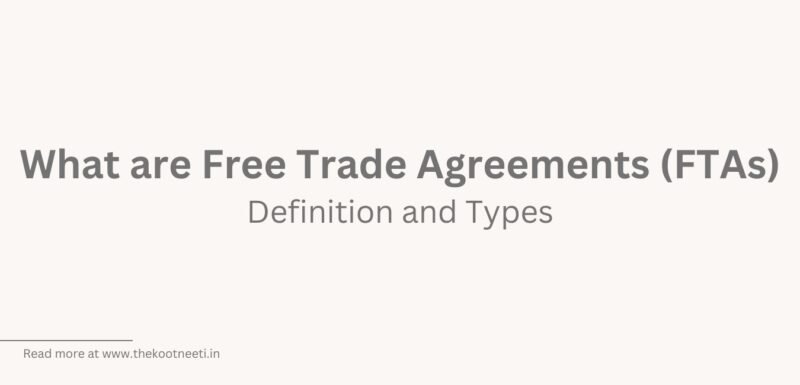What are Free Trade Agreements (FTAs): Definition and Types

Free trade is a policy that allows countries to trade with each other without interference or restrictions, such as tariffs, quotas, or other trade barriers. The goal of free trade is to increase economic efficiency and to promote economic growth by allowing countries to specialize in the production of goods and services in which they have a comparative advantage, and to exchange these goods and services with other countries.
Free trade is based on the principle of comparative advantage, which states that countries should specialize in the production of goods and services in which they have a lower opportunity cost, and should import goods and services that are produced more efficiently by other countries. This allows countries to benefit from economies of scale and to access a wider range of goods and services than they could produce on their own.
Free trade is typically promoted by international organizations such as the World Trade Organization (WTO) and regional trade agreements, which seek to reduce or eliminate trade barriers and to create a more open and integrated global trading system. However, free trade can also be controversial, as it can lead to changes in domestic industries and can have distributional effects, such as job losses and wage stagnation in some sectors.
Free trade agreement or FTA
A free trade agreement (FTA) is a treaty between two or more countries that aims to reduce or eliminate barriers to trade, such as tariffs, quotas, and other trade barriers. The goal of an FTA is to create a more open and integrated global trading system by allowing countries to specialize in the production of goods and services in which they have a comparative advantage, and to exchange these goods and services with other countries.
There are many different types of free trade agreements, and they can vary in scope and ambition. Some FTAs cover only a limited number of sectors, while others are more comprehensive and cover a wide range of goods and services. Some FTAs are also more ambitious in terms of the level of liberalization they seek to achieve, while others may be more limited in scope.
Free trade agreements can be bilateral, involving only two countries, or they can be multilateral, involving several countries. Some examples of major free trade agreements include the North American Free Trade Agreement (NAFTA), the European Free Trade Association (EFTA), and the Association of Southeast Asian Nations (ASEAN) Free Trade Area (AFTA).
There are several types of FTAs:
- Bilateral FTAs: These are agreements between two countries.
- Multilateral FTAs: These are agreements between three or more countries.
- Preferential FTAs: These are agreements that give preferential treatment to certain goods, such as lower tariffs, in order to promote trade between the countries involved.
- Free Trade Zones: These are areas within a country where goods can be imported, exported, and re-exported without being subject to tariffs or other trade barriers.
- Customs Unions: These are agreements between countries to eliminate tariffs and other trade barriers among themselves, while maintaining a common external tariff on imports from non-member countries.
- Economic Integration Agreements: These are agreements that go beyond just reducing trade barriers and aim to integrate the economies of the participating countries through measures such as the free movement of people, capital, and goods.


















